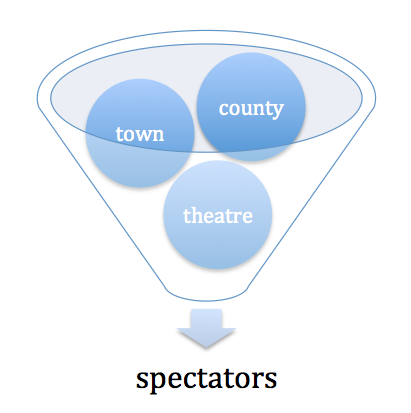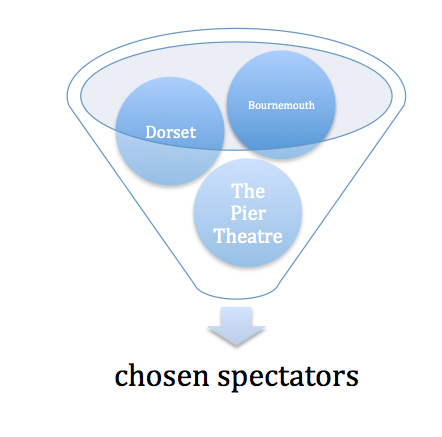Quantitative Research 3 – How Do You Choose a Sample? What Question Types Exist?
Welcome to our article about the best way to pick the people to whom you’ll be posing survey questions. We’ll acquaint you with the methods for selecting population samples, and then familiarize you with the basic survey types.
Why Is Sample Selection So Important?
Sample selection is indispensable for the research process, because a badly chosen sample of respondents can complicate or completely invalidate the problem you’re investigating. If you’re seeking answers to specific questions concerning certain areas, you should always study a group of people connected with those areas.
Example:
If you ask a child about internet banking, you definitely won’t obtain relevant information.
The main prerequisite for successful research is to correctly define the target group of respondents, who will then offer you relevant information. Without this step, your research cannot be considered adequate.
Sample Selection Methods
Let’s take a closer look at the universally recognized sample selection methods:
- Simple random selection
- Systematic random selection
- Stratified random selection
- Multi-step cluster selection
Simple Random Selection
A fine choice when studying general problems. The respondents are selected randomly, with no rules. Simple random selection can be compared to “drawing lots”; every respondent has the same chance of being picked.
All characteristics of a population can be covered easily using this method. But its results have to be taken as general.
Example:
A library director is interested in how men and women of various age categories assess the library’s services. So she has questionnaires left on the library desks, and visitors can answer them. The questionnaire determines age, gender, and level of satisfaction with library services.
In this example, every library user has the same chance of filling out the questionnaire. All of the prerequisites for acquiring responses from various age groups and genders are met.
Systematic Random Selection
This method is set up for selecting every nth person. For example, every tenth person.
This is a typical method for companies and organizations that have a database of potential respondents (lists of registered users of a particular service, customer lists, in-house databases of contacts). Every nth person is selected from these potential respondents, and is sent a questionnaire for completion.
This method is effective, but 100% coverage of the whole population sample is not guaranteed here.
Example:
A web portal offering an email service sends every fiftieth email address a questionnaire examining the email box’s functionality.
Stratified Random Selection
In this method, one creates a tightly focused group—a stratum—into which individuals with traits of interest are placed. For example, a group made up of men up to 18 years old. Individuals are then randomly selected from this group and surveyed.
Example:
Male customers age 18 and under are picked out of a database of a commercial portal’s registered users. A portion of the individuals in this group is randomly picked and sent a questionnaire about their satisfaction with the purchasing process.
This sample selection method can be used for easily selecting a desired target group with particular characteristics that you need to study. This method is good to use when you are focusing on a specific research area and a specific target group.
Multi-step Cluster Selection
This is similar to stratified random selection, but not as narrowly focused. Instead of creating strata, you create natural groupings of people (clusters*). Survey respondents are usually then randomly picked from these clusters.
One example would be the selection of theater attendees in a certain city:

Questionnaire Survey Types
The most common types of questionnaire-based surveys are:
- Paper questionnaires
- Online questionnaires
- Telephone questionnaires
- Questionnaires completed together with questioner
- Questionnaires distributed by post
If you’re not sure how to handle questionnaire surveys, consider what questionnaire response rate* you may get. Paper and online questionnaires are the types used the most today, as they demand the least time and money.
In the next piece in this series, we move on from general quantitative research to the subject of writing questionnaires easily and correctly.
Previous articles in this series:
If you have any questions, suggestions, or remarks (on this series or otherwise), please don’t hesitate to contact us via Facebook, Twitter, G+ or e-mail.
Glossary
- Response rate – the extent to which questionnaires are filled out and returned
- Respondent – a research participant who responds to questions
- Strata – tightly focused groups of individuals
- Clusters – natural groupings of people
Create your own questionnaire or survey for free
Setting up your first survey is quick and straight forward. Choose from one of 100 predefined templates or create your own from the scratch. Start getting your first responses in 5 minutes.
Create your own survey







2 comments
Awesome blog. I enjoyed reading your articles. This is truly a great read for me. I have bookmarked it and I am looking forward to reading new articles. Keep up the good work. louis vuitton online shopping //louis-vuitton-online-shopping.webnode.com/
Hi,
this is the reason why we are writing this blog – to bring you some knowledge and help you.
Continue reading, we have just started a new series which might be interesting.
Good luck with your business and do not forget to do research everytime before you make decisions!
Comments are closed.